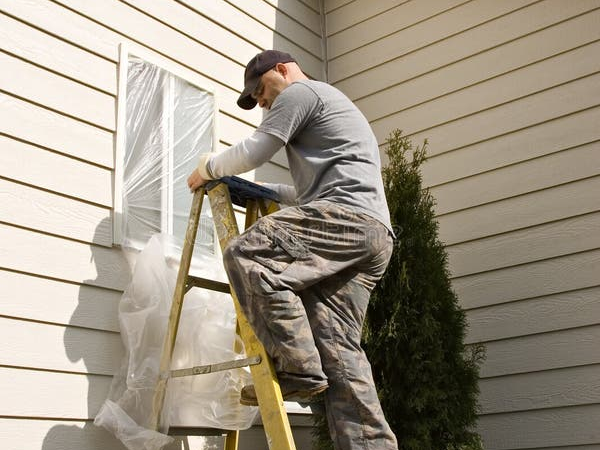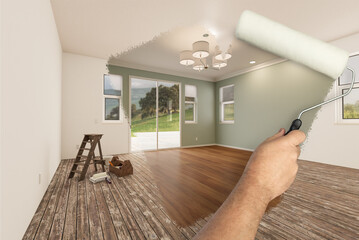How Long Do Exterior Paintjobs Last?
Anchorage Painters can increase its value and curb appeal. It also helps to protect it from moisture damage and wood rot.
The best time to paint is summer when it’s warm and dry. This will help the paint to dry correctly and look smooth. When choosing exterior painters, ensure they have valid insurance, customer testimonials, and references.

Your home’s exterior is its first defense against precipitation, critters, and water intrusion. It also makes your property look nice and protects the interior of your house. If your current paint job is starting to peel, crack, or fade, it’s time to think about a new one. Exterior painting requires patience, skill, and good equipment to make sure that the job is done well. Hiring a painting contractor with years of experience and professional tools will guarantee that your new coat of paint lasts for years.
A quality exterior painting project takes several weeks to complete. This is largely due to the preparation required before the actual painting. If you don’t prepare properly, your new paint job will start to peel and fade within a few years. In order to get a long-lasting paint job, you should follow these steps:
Before beginning the prep work for the outside of your house, remove any objects that might obstruct the surfaces you are painting. This includes shutters, light fixtures and anything else that is on or around your house.
You will also need to tape off any areas that you don’t want painted. This is usually around electrical outlets, utility heads and hose bibs. This can be time consuming but it will save you a lot of work later on when you’re trying to add the finishing touches.
Next, you will need to wash the surface. This can be done using high or low pressure washing depending on the type of surface you are working with. Washing the surface will help remove any mold and dirt that has accumulated over time. This will ensure that the finished product looks clean and will hold up to the elements.
After the surface is cleaned, it should be sanded down to smooth it out. A power sander is best for this, but you can use hand sanding as well. This will prepare the surface for primer and will make sure that the new paint adheres to the surface.
If you have any questions about the best sanding technique for your project, ask your painting contractor. It is also a good idea to apply a primer designed specifically for exterior use. This will help the paint resist moisture and huge temperature changes, which will prolong its life.
A professional painting company will use high-quality paints to provide a long-lasting, durable finish. They’ll also have the right equipment to get the job done quickly and efficiently. They’ll also have a variety of ladders and other tools to help reach hard-to-reach places.
If your home was built before 1978, make sure to read up on how to deal with the possible presence of lead paint. Wash the surface with a detergent and water (or an environmentally safe TSP alternative), and then carefully pressure wash your siding or masonry. You may need to skim or sand uneven areas, especially those where old paint has peeled. You’ll also want to patch holes and prepare the surface for a fresh coat of paint.
There are a few different types of exterior paint, including acrylic latex and oil-based solutions. Each has a unique composition that makes it suitable for a different surface type. Oil-based paints dry much more slowly than latex options and require chemical solvents for cleanup, but new formulations have made them faster and safer to work with.
Latex paints are a good choice for most exterior surfaces, as they’re tough and flexible enough to stand up to the elements. They also come in a wide range of colors and finishes, so you can find the perfect hue for your home. The best brands include Benjamin Moore, Sherwin Williams and Behr, all of which offer acrylic latex options that are ideal for exterior surfaces.
If you’re looking for a quick and easy painting project, choose an option with a low sheen. This kind of paint has a subtle, matte look that hides imperfections well and can give your home a modern or classic style. However, it’s not the most durable option. It’s best for areas that don’t receive a lot of sunlight or moisture.
For a more dramatic finish, choose an option with a high sheen. This kind of paint reflects more light and is a great choice for accent areas like doors, windows and trim. However, it’s not as durable as an acrylic flat paint. Depending on the material of your home, you might need to apply multiple coats to achieve full coverage and a smooth, even texture.
A quality paint job is more than just a cosmetic upgrade. It provides a protective barrier for your home and keeps it looking great year after year. A professional exterior painting service takes the time to clean, prep and carefully apply all layers of paint for a lasting finish that will protect your investment.
Before the brush hits the wood or vinyl, an inspection is done to look for any damage that needs to be repaired, such as chips, cracks, peeling and stains. Staining can often be killed with a chlorine bleach solution before the surface is power washed. After power washing, a quality sealer is applied to the surface. This creates a smooth surface for the primer and paint to stick, which helps prevent future peeling.
Then, the area to be painted is masked off and covered with drop cloths or plastic sheeting. Any areas that are not getting paint such as the foundation are treated with a special coating called Dry-Lock, which waterproofs the foundation and prevents it from peeling in the future.
A high-quality exterior paint is then chosen and applied according to the manufacturer’s instructions. We typically use Sherwin-Williams Duration with a satin finish. This product is recommended by professionals because it has excellent durability and long-lasting beauty.
While the paint is drying, caulking is done around doors, windows, and other areas where different exterior materials meet. This prevents moisture from seeping into the wall and damaging the wood. Once the paint is dry, all masking and coverings are removed and equipment is cleaned up.
The best time to paint is in the morning when dew has evaporated and it’s not hot or humid. Too much humidity or temperature extremes can cause the paint to not adhere properly and will cause it to flake or chip. In addition, it can be difficult to move ladders and work from them in high or windy conditions.
A new coat of paint can give a home’s exterior an instant refresh. However, how long it lasts will depend on a few factors. For one, the type of paint used is important. Interior paints contain binders that are designed to resist abrasion, while exterior paints use more durable materials that can withstand harsh outdoor elements. Additionally, the temperature and humidity can have a significant impact on how quickly a paint job will deteriorate.
Other considerations include how the surface was prepped. For example, if a homeowner hires painters to repaint the exterior of their home, it’s important that they make sure to pressure wash the surface before painting. This will ensure that the paint adheres properly and helps prevent moisture damage and toxic mold. In addition, the painters should also make sure that any cracks or settling lines are filled and caulked before painting. Finally, the painters should also make sure that they remove any tape residue and excess spray from areas of the surface where they were working.
The final inspection process is an important step in ensuring compliance with industry standards. Ideally, this will be done by an independent inspector to avoid potential conflicts of interest. The independent inspector will conduct a thorough inspection and review the project’s overall performance against the applicable regulations. This will help ensure that the project is a success and can be declared as complete.
In cases where a project is not meeting the necessary standards, a corrective action plan may be implemented. Depending on the severity of the issue, this could include rework, termination, or other remedial actions. The best way to avoid these types of issues is by incorporating a robust final inspection checklist that can be utilized across projects.
A final inspection checklist is an essential tool for maintaining quality and ensuring compliance with industry standards. Its structured format allows for meticulous compliance tracking, minimizing the risk of non-compliance and establishing credibility in the eyes of regulators. Learn how can streamline your inspection processes by scheduling a demo today.



